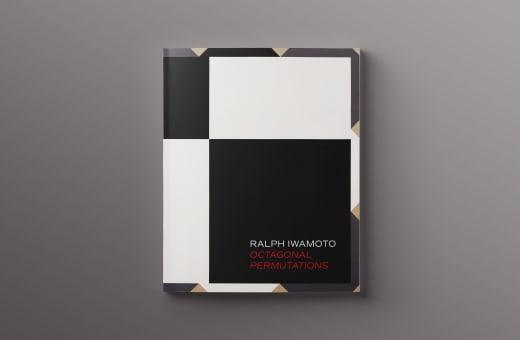News

Audrey Flack Keeps It Real The ninety-year-old artist, once known for photo-realist works, dishes on Josef Albers (a bit of a letch), the Abstract Expressionists (sex-crazed), and Rodin (“a perv”), as she prepares for a new show.
The petite, ninety-year-old artist Audrey Flack recently welcomed a visitor to her East Hampton house, which previously belonged to Jimmy (son of Max) Ernst. “Jimmy had real Surrealist taste,” Flack, who wore jeans, rainbow socks, and gold hoop earrings, said. “When I moved in, the kitchen was avocado green, with plaid carpeting.” She plopped onto a voluminous white sofa, beneath a 2004 work of her own, a Medusa rendered in pink glitter, titled “Art Is the Last Judgment,” and reminisced about Yale’s art program in the fifties, when the design department was headed by Josef Albers. By her account, he was a bit of a letch.
“Albers wasn’t terrible, just dangerous,” she explained. “That sweet little pink-cheeked Bavarian man. But it wasn’t as bad as the Cedar Tavern. You just knew what was going to happen there. Reuben Nakian, he’s like a second-level Ab Ex sculptor. He’s a little guy, too, and I was young, and he comes up to me and he puts his hands here.” She grabbed her breasts.
Hollis Taggart gallery is showing Flack’s early, mainly Abstract Expressionist work at the Hamptons Fine Art Fair, this weekend, under the title “Last Woman Standing.” Her floppy-haired studio manager, Severin Delfs, served tea from a blue teapot that had belonged to Elaine de Kooning.
“The Ab Ex women were worse than the men,” Flack said. “Worse in the sense that they felt that they had to outdrink the men. They bought into a behavior. The sex! It was crazy. I was no angel. But the women pay the price.” She turned her attention to Delfs. “Sevvy, my darling, you may have to add hot water because it gets pretty strong—Elaine’s teapot doesn’t make great tea.” She went on, “Lee was always mad at Elaine for taking Bill’s name. She’d say, ‘I’m Lee Krasner, I’m not Lee Pollock. You’re Audrey Flack!’ Elaine, in retaliation, got a dog that she called Jackson, and she would say, ‘Jackson, sit!’”
Delfs added, “This dog was apparently a stray and walked into Bill de Kooning’s studio and shat in the middle of the floor. And they were, like, that’s just like Jackson!”
Flack recalled that in the mid-century art world it was “almost radical to say you could be a mother, to talk about your children.” When a Madison Avenue gallery director asked to see Flack’s pioneering photo-realist paintings, in 1963, she scuttled her two daughters and their babysitter out of her 104th Street apartment, whose dining room served as her studio. “I ran around the house putting clothes, diapers, everything away. Any sign that I had a child had to be erased.” The gallerist included her painting of John F. Kennedy in a show titled “Six Women Artists.”
The critic Hilton Kramer panned her photo-realist works as “kitschy still-lifes” in 1976, the year after MoMA acquired one. Flack has shelves of campy trinkets (a mug with bobbling breasts, a cobra clock) that she lovingly handled on the way to her studio, which housed large sculptures of Daphne, Eve, and another Medusa, alongside an in-progress Dürer-Disney mashup painting.
“I’m always ahead,” Flack said. “It’s just a fact. They’ll catch up to this stuff. There were great sculptors in the eighteen-hundreds, the ‘New Sculptors,’ and Rodin comes and knocks them all out—that’s another bastard. He had women do all his marbles and his models run around naked. He was a perv.”
Flack played banjo in a group called Audrey Flack and the History of Art Band, for which she wrote a song about Rodin’s lover, the sculptor Camille Claudel. She sang, “I fell in love with Rodin / I thought he was my only man / but then he double-crossed me / he broke my heart, oh, woe is me.”
“It’s interesting,” she said. “I never liked Rodin’s work. What did Pollock say? You paint who you are.” So why does she keep returning to Medusa?
Flack mused, “Medusa was a triplet—Medusa, Stheno, and Euryale—and she was the only normal one. They were Gorgons with fangs and claws and scales, but she was beautiful. Her mother is the mother of all monsters, poor woman. Then she has Medusa, who sings like an angel. And Poseidon takes one look at her and falls in love. And what do Greek gods do when they fall in love?” A loaded pause.
Delfs chimed in, “So she’s running away and ends up in Athena’s temple, asking for help.”
Flack: “But he rapes her, in the temple. Now, the myth is that Athena is so angry that her temple was defiled that she turns Medusa’s hair to snakes.”
Delfs: “Punishes the woman.”
Flack: “She’s not only raped, she’s blamed for it! But I think there’s another side, because the fact that her hair gets turned to snakes empowers her. Now she looks at a man and he turns to stone. So she’s also known as the great sculptor—all these frozen men!”
Published in the print edition of the September 6, 2021, issue, with the headline “Ars Longa.”
Emma Allen is The New Yorker’s cartoon editor and edits humor pieces on newyorker.com.







